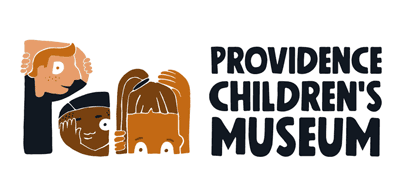Monuments
Developed by Alenoush Hagopian, PCM Play Practicum 2023, Verizon Tech Enhanced 2023
(FOCUS: Grade 4, Civics & Culture, History & Humanities)
This history lesson will prepare students to think critically about how history is memorialized in the United States, specifically through monuments/statues. They will analyze how monuments/statues can be problematic and perpetuate a narrative that can be harmful to some people, especially those who have been historically marginalized in the United States.
Students will use Google Maps to take a field trip to six famous monuments. They will initially be asked to critique the monument and write down what they notice and wonder about the monuments they are observing. Then they will read a short description about the monument, which will give them more insight about its significance. Finally, students will engage in a whole group discussion about the monuments and whether they are of merit or should be taken down. Students will choose one monument and write a short opinion writing piece about whether they would keep, take down, or relocate the monument and why.
Materials to gather
- 6 Chromebooks/Ipads
- QR codes generated for each monument to Google Maps
- Printed QR codes
- Monument Opinion writing worksheet
Set Up
- Teacher will need access to a white board and projector to project Google Slides that go with this lesson.
- Six QR codes should be generated for each monument that will be explored on Google Earth.
- The QR codes should be printed and posted throughout the room with equal space between each monument marker.
- Students Ipads/Chromebooks should be charged and available to use for this activity
- Projector will be needed to display Google slides that will help guide the teacher and students through the activity.
Student’s Job
- Can monuments misrepresent history and perpetuate myths about our past?
- Are there monuments in the United States that are harmful and should be taken down?
Introduction:
- Begin by discussing what monuments are and why they think they are built. Tell students that monuments tell a story about the past and are meant to honor important people, events, or ideas.
- Use the Google Slides, “What is a monument?” to show students the definition of monuments and show examples of famous monuments across the U.S. (e.g. Lincoln memorial)
Understanding Monuments:
- Explain that they will be visiting a few monuments today through Google Earth. The teacher will review the objectives with the students for the activity, which are the following:
- I can use Google Earth to explore statues/monuments.
- I can write down what I notice and wonder about the monument/statues.
- I can explain why some monuments can be harmful
- I can write a short opinion writing piece that explains what should be done with statues are problematic.
- Show students how to use the Google Earth program, by choosing a monument to explore with the whole class.
- Group students into pairs or groups of three. Assign one student in each pair or group to use their Google Chromebook to scan the QR codes that are posted around the room. Assign students to stand near a QR code and tell them that is where they are starting, and they will be moving clockwise to go to the next monument. Each group will have 7 minutes at each station.
- When the rotations are complete, have a whole group discussion about what they noticed and wondered about the monuments/statues they explored. Ask students if they noticed that most of the statues are of white men and how some were enslavers or people with a background that would be considered problematic.
- Ask students to use the opinion writing worksheet to answer the question, “Should statues/monuments of people from the past who have a problematic past be taken down, kept up, or relocated?”
Further Challenges:
Students can review the findings from an audit completed by Monument labs about the type of people and events monuments represent from history. Students will then be asked to consider the question: Can monuments misrepresent people and teach inaccurate history? Can they be harmful? What can we do about it?
Teacher’s Job
Prepare/ Background Info
- Students should have experience using a QR code and Google Earth.
- Students will need some background information about racial injustice in history and some background on infamous figures in history like Christopher Columbus.
Effective Facilitation Strategies
- Students will need access to Google Earth through their iPad or Chromebooks. If using Chromebooks, they need to have a working webcam that will be able to scan the QR codes.
